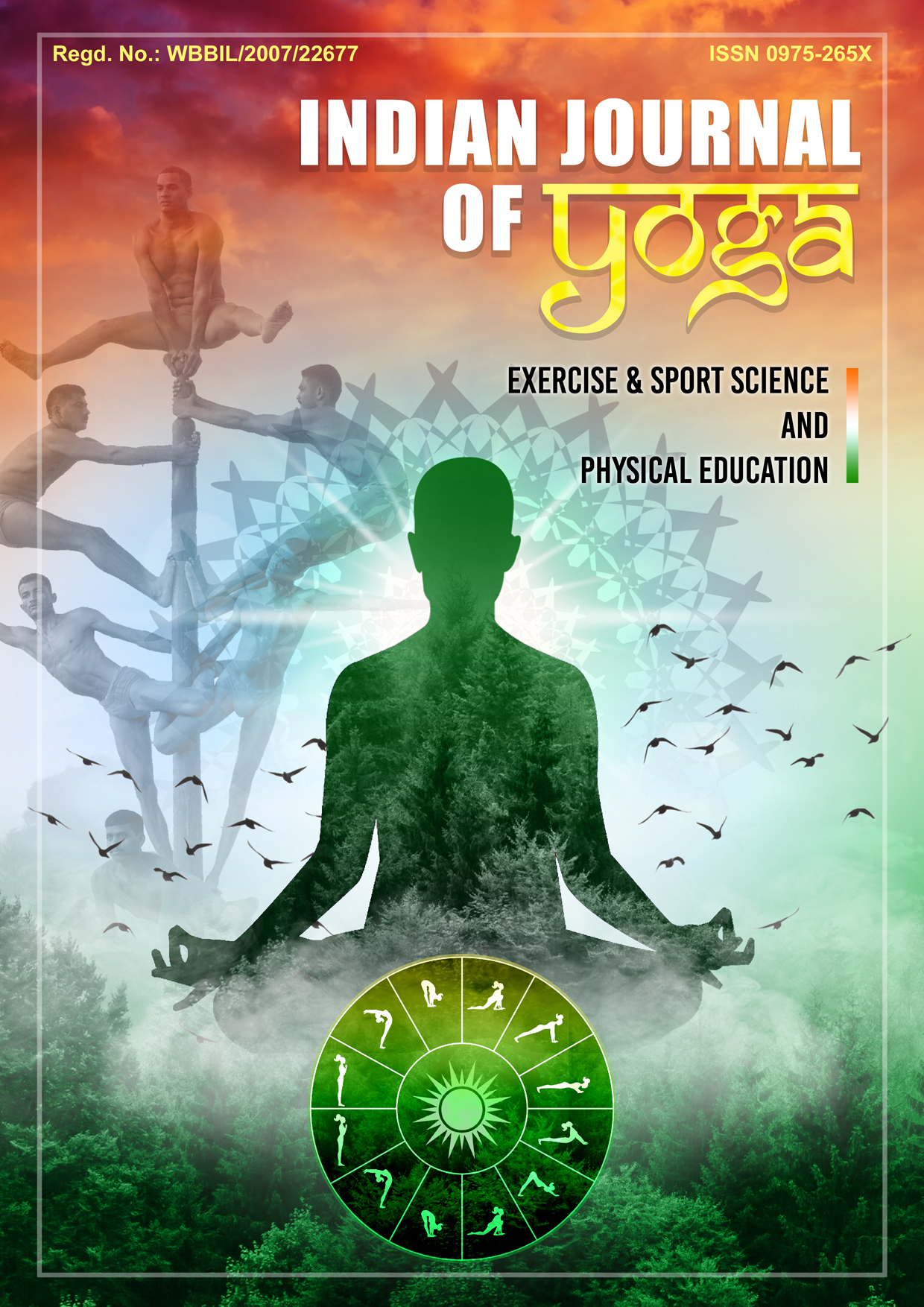ENHANCEMENT TEACHING AND LEARNING PROCESS THROUGH THE APPLICATION OF ICT IN PHYSICAL EDUCATION
DOI:
https://doi.org/10.58914/ijyesspe.2022-7.1-2.5Keywords:
Physical Education, Information and Communication Technology, Teaching, Learning, Computer TechnologyAbstract
In the modern world, ICT (information and communication technology) application in education has expanded quickly. Classes are becoming more engaging because to the use of computers in education, projectors, smart boards, and the internet. Research projects, assessments, statistical analysis, the collection of course materials, and communication with teachers and students all make use of computer and Internet technology. An essential component of the educational system is the teacher. Without a better instructor, it is impossible to conceive a better learning environment. Our time is referred to as the “knowledge explosion age.” The field of knowledge is growing quickly. A teacher needs to keep up with changes in order to educate more effectively. ICT is really helpful in this. Systems of education have had a significant impact on the growth of contemporary economics. Tools and services that manage and communicate information are referred to as ICT, or information and communications technology. ICT makes it possible for students to learn at their own pace using a variety of instruments, including computers and assignments, and as a result, the teaching and learning process has improved. There are many young people with a keen interest in technology in today’s classrooms. Institutions can improve learning chances for students by combining audiovisual learning with the conventional blackboard. Other than the fact that physical education is already entwined with the allure of contemporary scientific technology, physical education is still taught using an antiquated and conventional technique. In order to investigate the topic for the benefit of the students in the area of globalization of education, a transitional change is definitely needed. The purpose of this essay was to explore the drawbacks, value, and advantages of information and communication technology in the classroom. From the overall results, it can be inferred that using a computer for teaching and learning involves the use of technology. We also make sure that ICT has a beneficial impact on students’ learning. This essay analyses the state of physical education in colleges today, demonstrates its shortcomings, and then elaborates on the benefits of information technology in the delivery of physical education in universities.
Downloads
References
Brush T, Glazewski KD, Hew KF. 2008. Development of an instrument
to measure preservice teachers’ technology skills, technology beliefs, and
technology barriers. Computers in the Schools 25;112-125.
Casey A, Goodyear V. 2015. Can cooperative learning achieve the four
learning outcomes of physical education? a review of literature. Quest
; 56–72.
Castro SJJ, Alemán EC. 2011. Teachers’ opinion survey on the use of
ICT tools to support attendance-based teaching. Journal Computers and
Education 56;911-915.
Chai CS, Koh JHL, Tsai, CC, 2010. Facilitating preservice teachers’
development of technological, pedagogical, and content knowledge.
Educational Technology and Society 13; 63-73.
Chen J, Liu X. 2017. Application of computer multimedia technology in
auxiliary Physical Education. Automation and instrumentation 2; 129–
Chen X., Pan Y. Application of computer simulation technology in
Physical Education. 2015;11: 152
Crook CK. 1999. Internet assisted learning. Journal of Computer Assisted
Learning 15(1);91-94.
Darshan K. 2017. Application of computer in physical education and
sports 4(3); 335-336.
Fateme SL. 2014. The Impact of Using PowerPoint Presentations on
Students’ Learning and Motivation in Secondary Schools. Procedia -
Social and Behavioral Sciences 98; 1672 – 1677.
Gavin N, Kenny, Carol S. 1979. Computer-assisted learning in the
teaching of anaesthesia. Anaesthesia 34; 159-162.
Ismail ME, Irwan M, I, Othman H, Amiruddin MH, Ariffin A. 2017. The
use of animation video in teaching to enhance the imagination and
visualization of student in engineering drawing. IOP conference series
Jago R., Mcmurray RG.2009. Modifying middle school physical
education: piloting strategies to increase physical activity. 21(2);171–
Jebakirubai K.2017. Computer Assisted Teaching and Learning in
Classrooms. Journal of Technology for ELT; 7.
Junmin L, Mengjuan L. 2020. Application of Information Technology in
College Physical Education. Journal of Physics: Conference Series 1574
Kuiper E, Volman M, Terwel J. 2008. Integrating critical Web skills and
content knowledge: Development and evaluation of a 5th grade
educational program. Computers in Human Behavior 24; 666–692.
Lowther, DL, Inan FA, Strahl JD, Ross SM. 2008. Does technology
integration work whenkey barriers are removed? Educational Media
International 45; 195-213.
Mcmahon, Graham. 2009. Critical thinking and ICT integration in a
Western Australian secondary school. Educational Technology and
Society 12; 269–281.
Pal A. 2017. Importance of Computer Education In The Field Of Physical
Education. IJRSSIS 5; 49-50.
Ruiz JG, Cook DA, Levinson AJ. 2009. Computer animations in medical
education: a critical literature review. Medical education 43; 838-846.
Salend SJ. 2021. Technology-Based Classroom Assessments: Alternatives
to Testing. Teaching Exceptional Children 41(6); 49-58.
Serhan D, 2009. Preparing preservice teachers for computer technology
integration. International Journal of Instructional Media 36; 439-447.
Sylvia C. 2000. Internet usage in education. T.H.E. Journal 27(10); 12.
Watts-Taffe S, Gwinn CB, Horn ML. 2003. Preparing preservice teachers
to integrate technology with the elementary literacy program. The Reading
Teacher 57; 130- 138.




